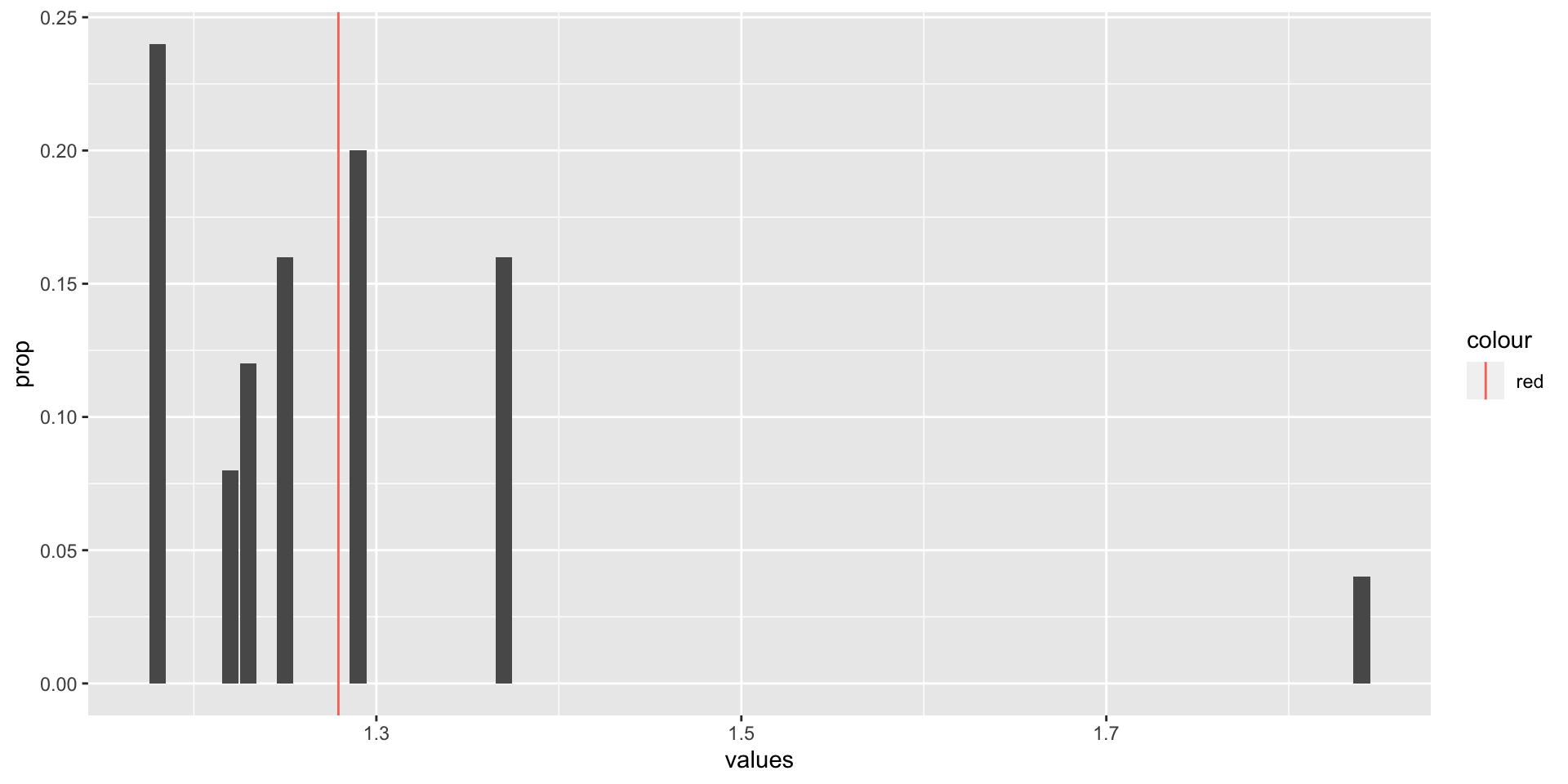
Chapter 9: Random variables
STAT 1010 - Fall 2022
Learning outcomes
By the end of this lesson you should:
Know how to find the mean given a probability mass or distribution function
Understand how to use multiplication and addition rules to find expected values and variance of new random variables
Revision - 1
Find the mean, and variance for these examples:
\(20, 24, 25, 36, 25, 22, 23\)
Rolling a fair six-sided die
Revision - 2
A stock prices (\(X\)) at these frequencies:
| \(x\) | \(n\) |
|---|---|
| 1.23 | 3 |
| 1.29 | 5 |
| 1.37 | 4 |
| 1.84 | 1 |
| 1.18 | 6 |
| 1.22 | 2 |
| 1.25 | 4 |
| Total | 25 |
Using proportions
| \(x\) | \(n\) | \(P(X) = x\) |
|---|---|---|
| 1.23 | 3 | |
| 1.29 | 5 | |
| 1.37 | 4 | |
| 1.84 | 1 | |
| 1.18 | 6 | |
| 1.22 | 2 | |
| 1.25 | 4 | |
| Total | 25 |
Mean or expected value
If we know $P(X) = x$, then we can use this to find the mean or expected value of a random variable. The pdf includes information about both the total and the number of occurrences of \(x\), it does the computation for us.
\(\mu = E(X)\)
\(= x_1p(x_1) + x_2p(x_2) + … + x_np(x_n)\)
Probability density function
There are different ways to define a pdf:
table
plot
plot - pdf
## Input data
values <- c(1.23, 1.29, 1.37, 1.84, 1.18, 1.22, 1.25)
counts <- c(3, 5, 4, 1, 6, 2, 4)
d <-
as_tibble(data.frame(values, counts)) %>% # make tibble
mutate(prop = counts/sum(counts), # find proportion
part_mean = values*prop, # multiply values & prop
mean = sum(part_mean)) # find the sum
d %>%
ggplot(aes(x = values, y = prop)) + # for values and prop
geom_bar(stat = "identity") + # make bar chart of identity (prop)
geom_vline(aes(xintercept = mean, color = "red")) # and line of meanPrice increase
All the stock values have increased by $5:
What happens to the mean?
What happens to the standard deviation?
Price increase
| \(x\) | \(x + 5\) | \(P(X) = x+5\) |
|---|---|---|
| 1.23 | 6.23 | 0.12 |
| 1.29 | 6.29 | 0.20 |
| 1.37 | 6.37 | 0.16 |
| 1.84 | 6.84 | 0.04 |
| 1.18 | 6.18 | 0.24 |
| 1.22 | 6.22 | 0.08 |
| 1.25 | 6.25 | 0.16 |
Price increase
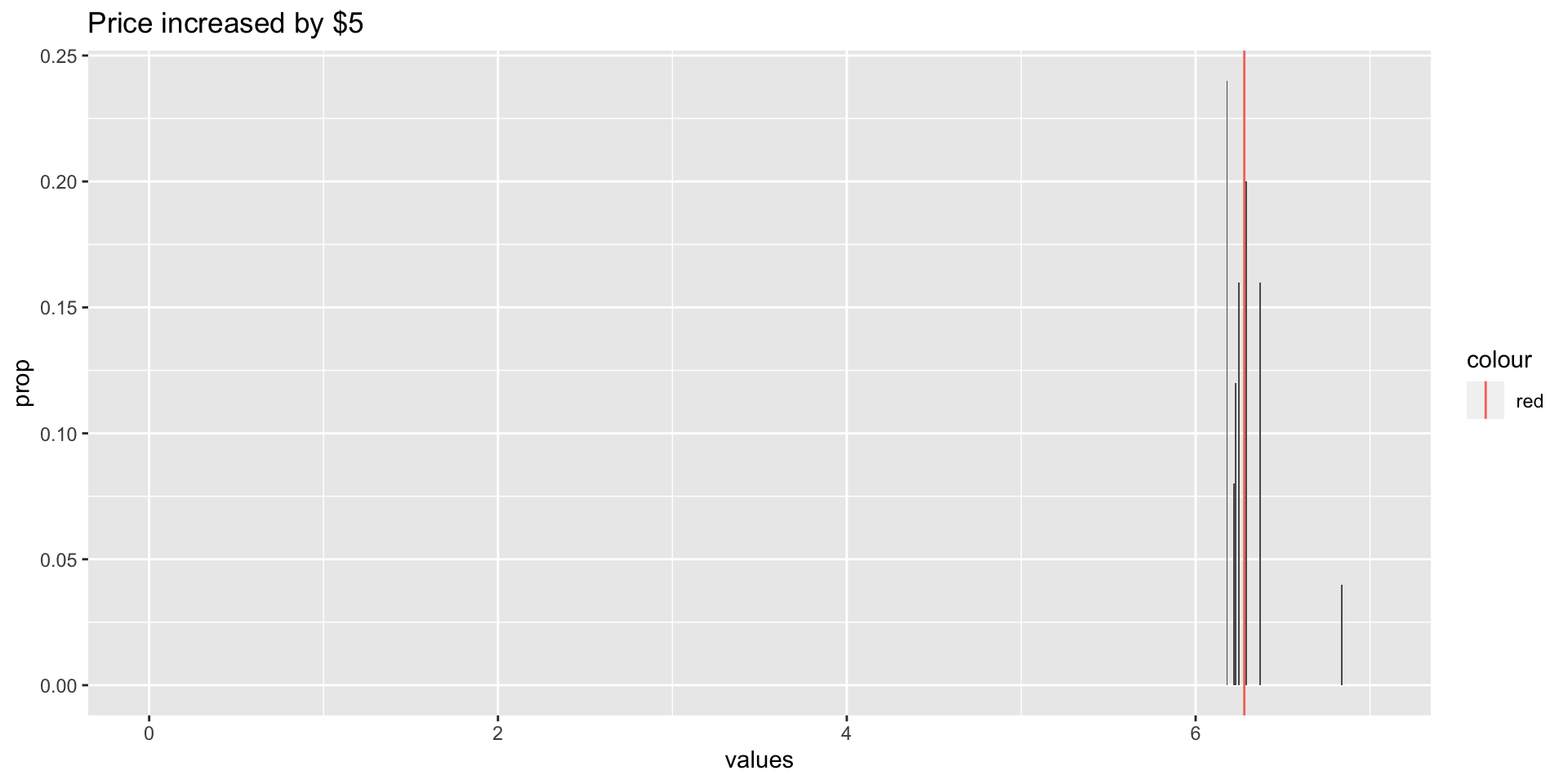
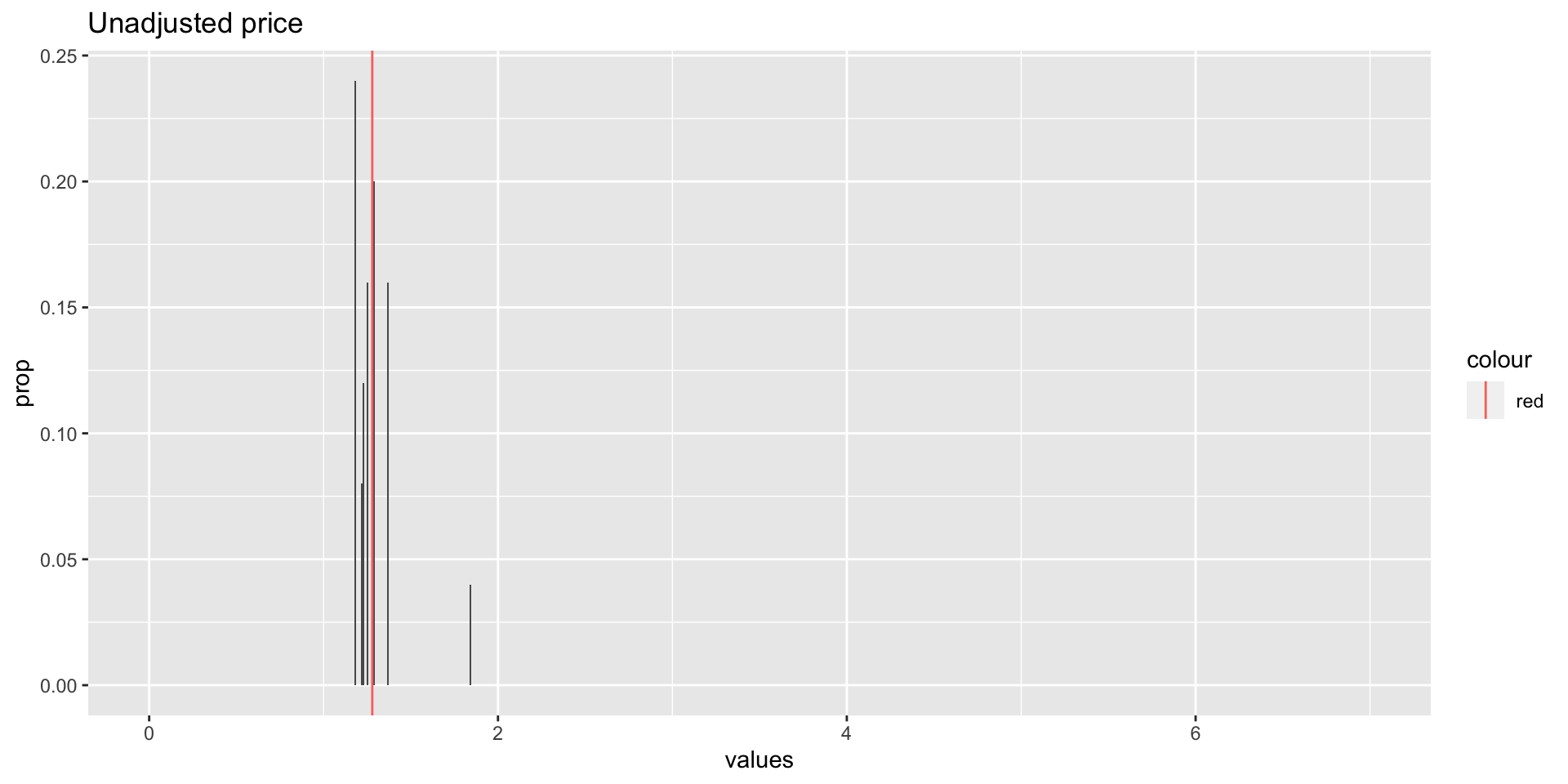
Adding a constant
\(E(X \pm c) = E(X) \pm c\)
\(SD(X \pm c) = SD(X)\)
\(Var(X \pm c) = Var(X)\)
Stock splits
Without decreasing the cost, the stock values are now 3 times what they were before:
What happens to the mean?
What happens to the standard deviation?
Stock splits
| \(x\) | \(3x\) | \(P(X) = x\) |
|---|---|---|
| 1.23 | 3.68 | 0.12 |
| 1.29 | 3.87 | 0.20 |
| 1.37 | 4.11 | 0.16 |
| 1.84 | 5.52 | 0.04 |
| 1.18 | 3.54 | 0.24 |
| 1.22 | 3.66 | 0.08 |
| 1.25 | 3.75 | 0.16 |
Stock splits
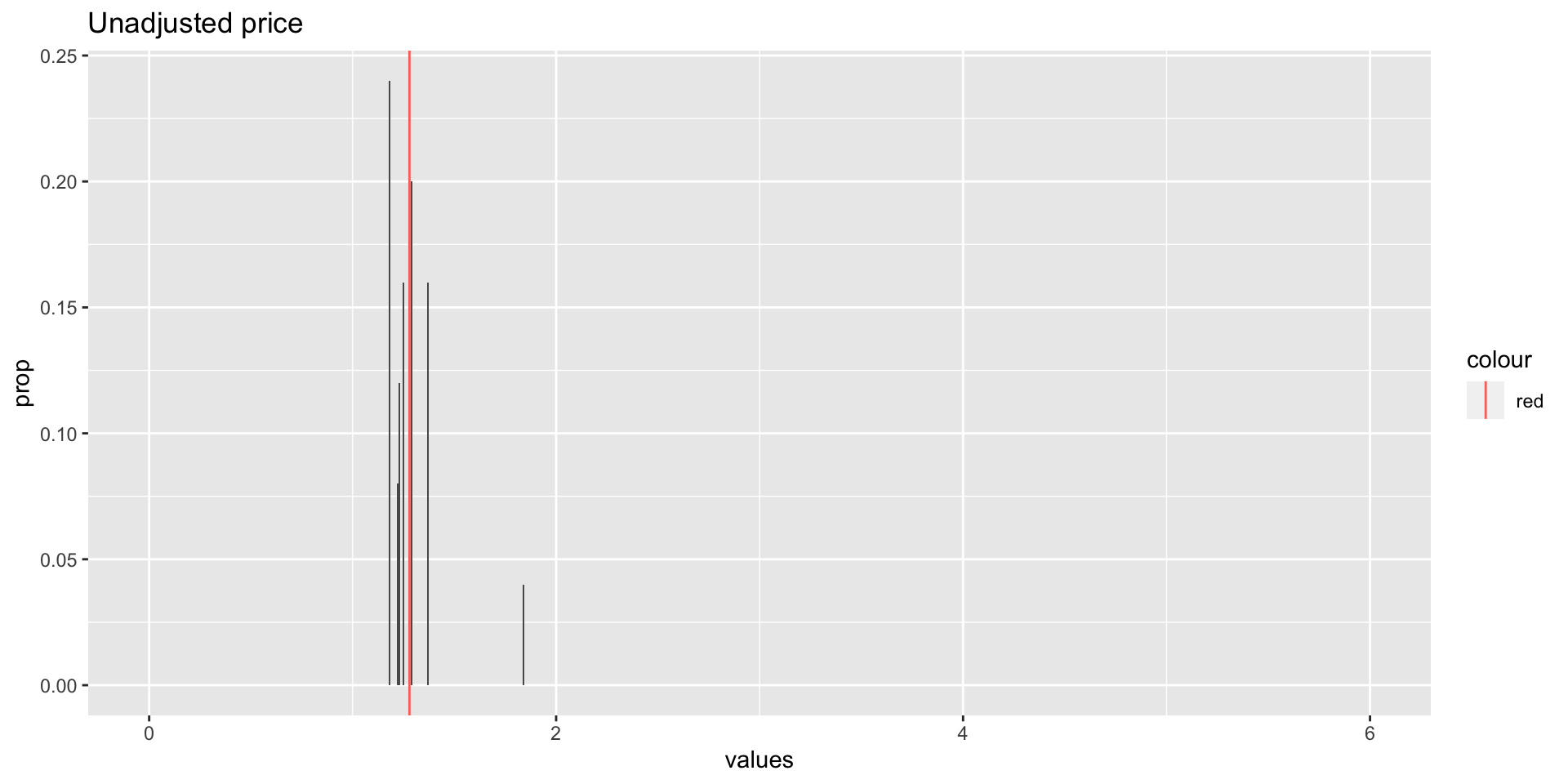
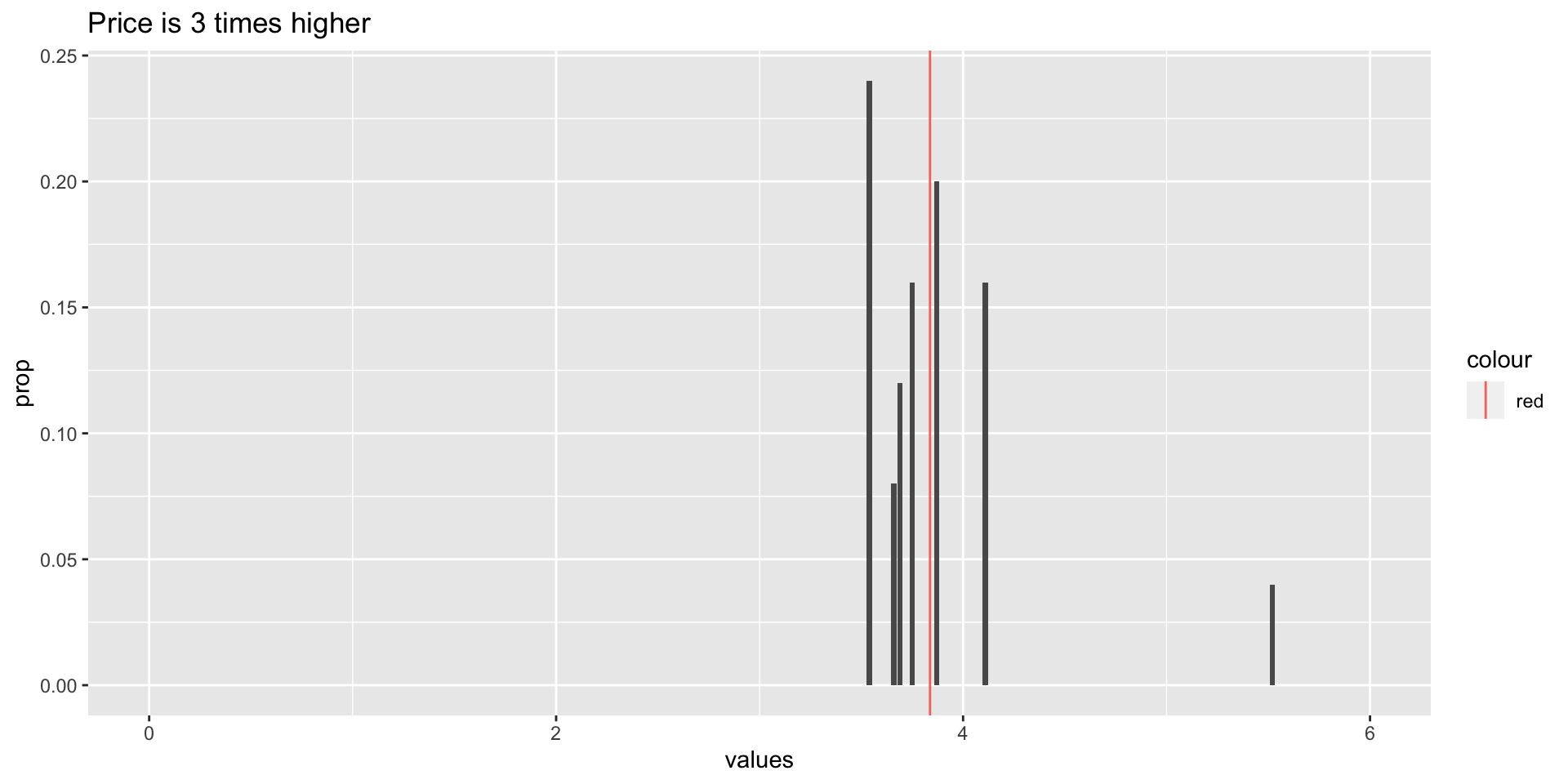
Multiply by a constant
\(E(cX) = cE(X)\)
\(SD(cX) = |c|SD(X)\)
\(Var(cX) = c^2Var(X)\)
\(E(cX \pm a)=cE(X) \pm a\)
\(Var(cX \pm a)=c^2Var(X)\)
Parameter vs estimate
| population | sample | |
|---|---|---|
| name | parameter | estimate |
| mean | \(\mu\) | \(\bar{x}\) |
| variance | \(\sigma^2\) | \(s^2\) |
standard deviation |
\(\sigma\) | \(s\) |
| size | \(N\) | \(n\) |
Visually
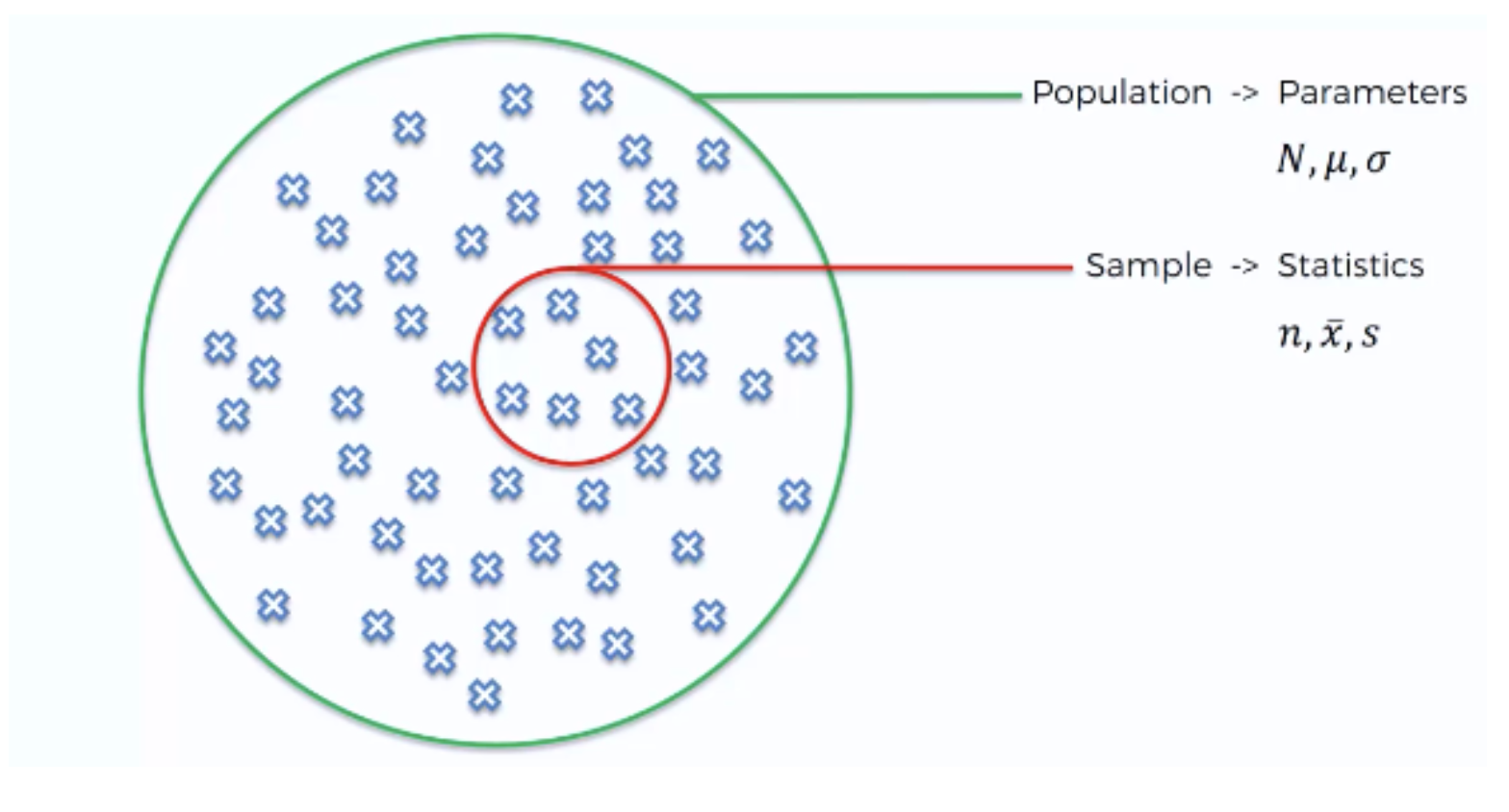
Your turn
Click here or the qr code below
